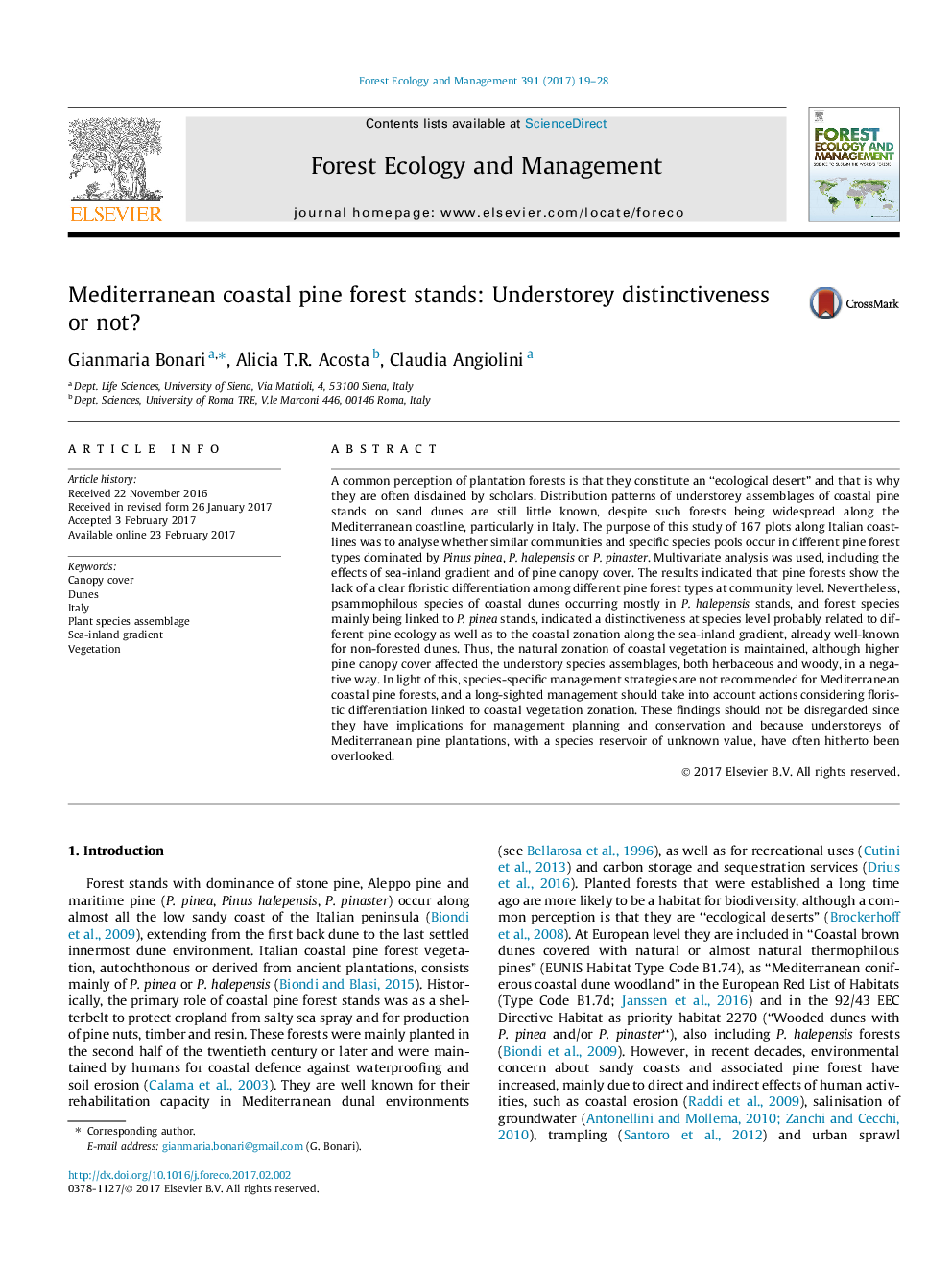| کد مقاله | کد نشریه | سال انتشار | مقاله انگلیسی | نسخه تمام متن |
|---|---|---|---|---|
| 6459388 | 1421367 | 2017 | 10 صفحه PDF | دانلود رایگان |
- Pine coastal type forests are not different at community level.
- Differences at species level are linked to sea-inland gradient.
- Coastal dune vegetation succession is relatively maintained in pine stands.
- Higher canopy cover negatively affects pine forest understoreys.
- Management should consider the understorey of Mediterranean pine stands.
A common perception of plantation forests is that they constitute an “ecological desert” and that is why they are often disdained by scholars. Distribution patterns of understorey assemblages of coastal pine stands on sand dunes are still little known, despite such forests being widespread along the Mediterranean coastline, particularly in Italy. The purpose of this study of 167 plots along Italian coastlines was to analyse whether similar communities and specific species pools occur in different pine forest types dominated by Pinus pinea, P. halepensis or P. pinaster. Multivariate analysis was used, including the effects of sea-inland gradient and of pine canopy cover. The results indicated that pine forests show the lack of a clear floristic differentiation among different pine forest types at community level. Nevertheless, psammophilous species of coastal dunes occurring mostly in P. halepensis stands, and forest species mainly being linked to P. pinea stands, indicated a distinctiveness at species level probably related to different pine ecology as well as to the coastal zonation along the sea-inland gradient, already well-known for non-forested dunes. Thus, the natural zonation of coastal vegetation is maintained, although higher pine canopy cover affected the understory species assemblages, both herbaceous and woody, in a negative way. In light of this, species-specific management strategies are not recommended for Mediterranean coastal pine forests, and a long-sighted management should take into account actions considering floristic differentiation linked to coastal vegetation zonation. These findings should not be disregarded since they have implications for management planning and conservation and because understoreys of Mediterranean pine plantations, with a species reservoir of unknown value, have often hitherto been overlooked.
Mediterranean pine coastal forest at Feniglia Dune (Italy) (photo credit © Gianmaria Bonari).446
Journal: Forest Ecology and Management - Volume 391, 1 May 2017, Pages 19-28
